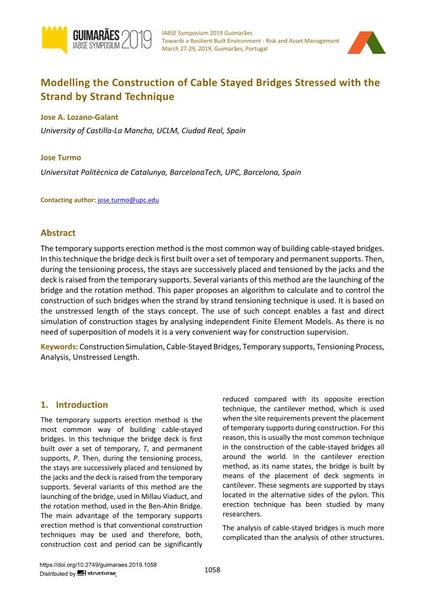Modelling the Construction of Cable Stayed Bridges Stressed with the Strand by Strand Technique

|
|
|||||||||||
Bibliographic Details
| Author(s): |
Jose A. Lozano-Galant
(University of Castilla-La Mancha, UCLM, Ciudad Real, Spain)
José Turmo |
||||
|---|---|---|---|---|---|
| Medium: | conference paper | ||||
| Language(s): | English | ||||
| Conference: | IABSE Symposium: Towards a Resilient Built Environment Risk and Asset Management, Guimarães, Portugal, 27-29 March 2019 | ||||
| Published in: | IABSE Symposium Guimarães 2019 | ||||
|
|||||
| Page(s): | 1058-1064 | ||||
| Total no. of pages: | 7 | ||||
| DOI: | 10.2749/guimaraes.2019.1058 | ||||
| Abstract: |
The temporary supports erection method is the most common way of building cable-stayed bridges. In this technique the bridge deck is first built over a set of temporary and permanent supports. Then, during the tensioning process, the stays are successively placed and tensioned by the jacks and the deck is raised from the temporary supports. Several variants of this method are the launching of the bridge and the rotation method. This paper proposes an algorithm to calculate and to control the construction of such bridges when the strand by strand tensioning technique is used. It is based on the unstressed length of the stays concept. The use of such concept enables a fast and direct simulation of construction stages by analysing independent Finite Element Models. As there is no need of superposition of models it is a very convenient way for construction supervision. |
||||
| Keywords: |
cable-stayed bridges analysis construction simulation Temporary supports Tensioning Process Unstressed Length
|
||||
